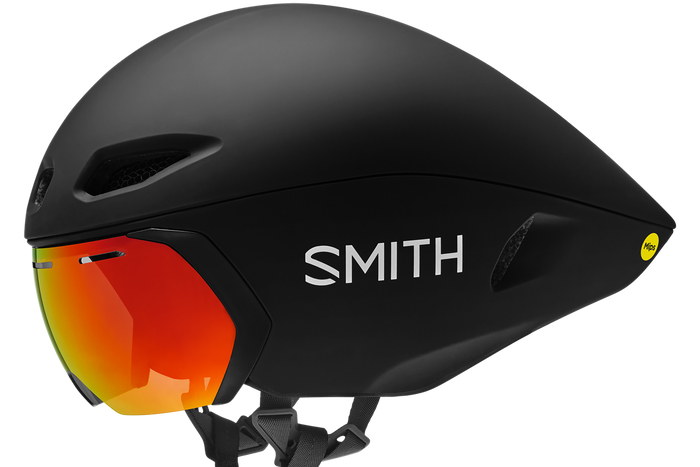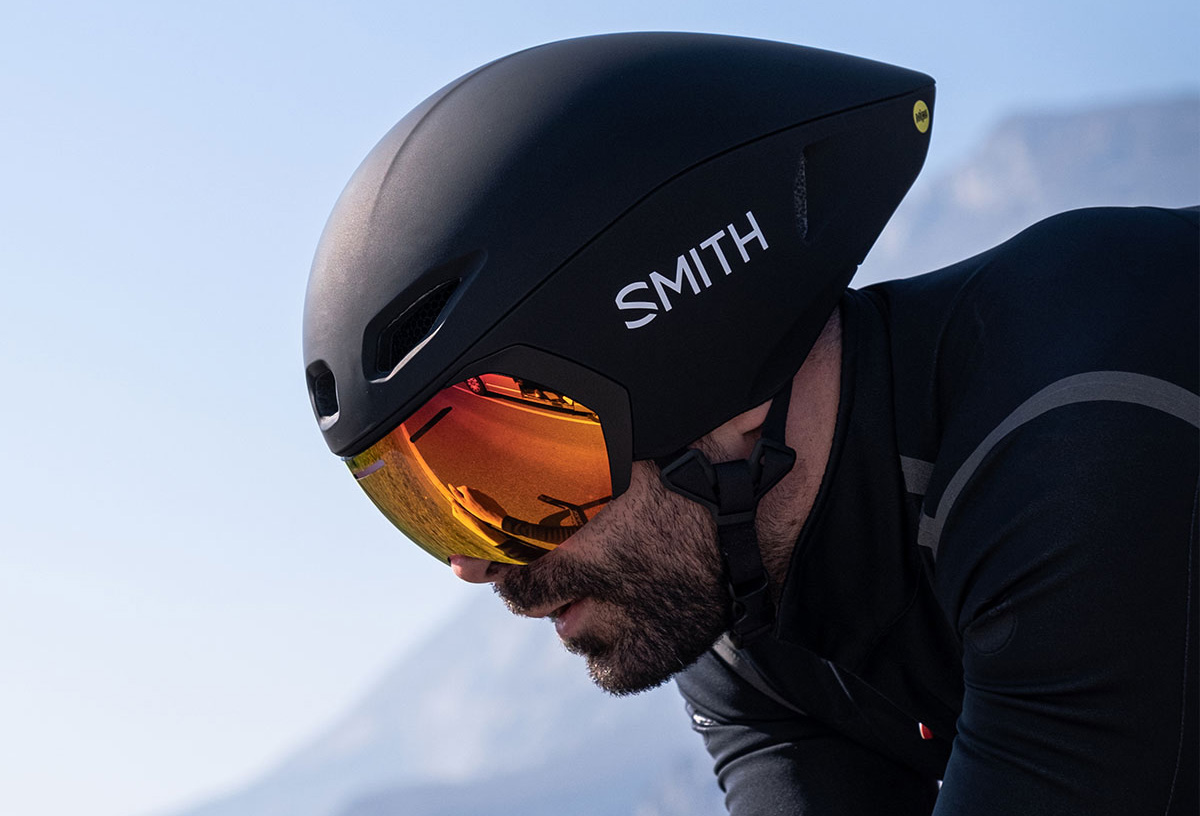The bike helmet industry has continued to expand in recent years, with no signs of stopping. Market research is predicting a further 2.5 percent growth over the next four years. At the same time, the technology surrounding bike helmets has advanced rapidly in recent years, with a focus on both safety and speed.
Professional athletes seek new ways to gain an edge when the difference between first and second place is often measured in seconds. As a result, the technology behind racing helmets has matured as manufacturers began rethinking options for helping competitive cyclists improve their aerodynamic efficiency.
Enter Smith’s new Jetstream TT, a teardrop-style bicycle helmet designed to help competitive cyclists shave a few more seconds off their race times while still emphasizing safety. Replacing the company’s older Podium model, Smith created the Jetstream TT for cyclists competing in time trials and triathlons.

The helmet’s features include the Zonal Koroyd protection, a lightweight and energy-absorbing material that is designed to crush upon impact. Also, Smith remains the only US brand using that material in its helmets, making the Jetstream TT a likely candidate for cyclists concerned about safety and improving their race times.
Other features include the magnetic visor for easy switching between ChromaPop and clear lens options, five vents to keep the rider cool without added drag, and a VaporFit dial adjustment system that offers 270-degree fit adjustment with the turn of a dial.
While it’s understandable that racing cyclists would place greater emphasis on their wheels, some research suggests that an aerodynamic helmet like the Jetstream TT can offer better results for far less money.
A 2017 study published in Sports Engineering reached precisely that conclusion. After a lengthy explanation of their research into the various factors affecting speed, the authors mentioned the 1989 Tour de France as an example, with Greg LeMond becoming the surprise winner by 8 seconds — the smallest winning margin in the competition’s history. LeMond was wearing an aero-helmet, while race leader Laurent Fignon wore no helmet.
A helmet like the Jetstream TT might be the answer if you’re looking for creative ways to improve your personal best.

